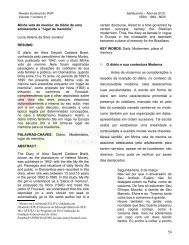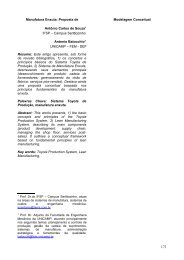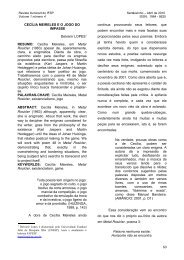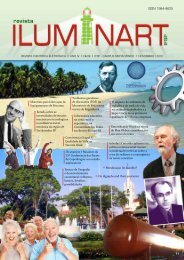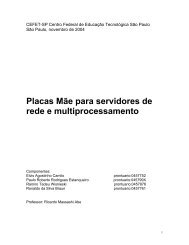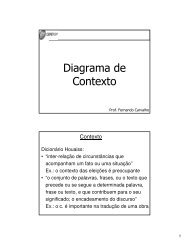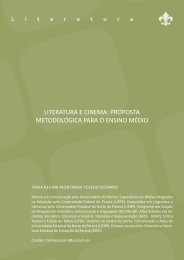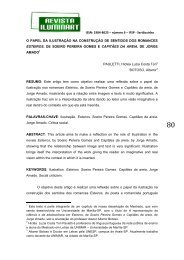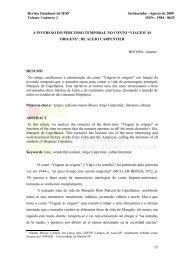Página 97
Página 97
Página 97
Create successful ePaper yourself
Turn your PDF publications into a flip-book with our unique Google optimized e-Paper software.
ISSN: 1984 – 8625 – número 7 – IFSP - Sertãozinho - 2011<br />
non-coned. In other words, in Hn there exists at least one non-coned<br />
(n − 2)-cycle. Conversely, if Tn is not hamiltonian, then its simple<br />
quotient is T2. Hence every cycle of Tn is included in an e-component,<br />
and therefore it is coned.<br />
Remark 5.3 Also H3 and H4 contain non-coned m-cycles, but in<br />
this case the condition m ≤ n − 2 is not satisfied.<br />
If C is a non-coned cycle of Hn and v ∈ V (C), then it is possible<br />
to extend C to a cycle through all the vertices of Hn \ v. This fact<br />
motivated Burzio and Demaria (see [7]) to define:<br />
Definition 5.4 Let C be a non-coned cycle of Hn. The set<br />
Pc = V (Hn) \ V (C) consists of neutral vertices of Hn, and these are<br />
called poles of C. A non-coned cycle C of Hn is said to be minimal<br />
if every cycle C ′ , such that V (C ′ ) ⊂ V (C), is coned by at least<br />
one vertex of Hn. A minimal cycle is said to be characteristic if it<br />
possesses the shortest length of the minimal cycles. The length of<br />
a characteristic cycle is called the cyclic characteristic of Hn and it<br />
is denoted by cc(Hn). The difference n − cc(Hn) is called the cyclic<br />
difference of Hn and is denoted by cd(Hn).<br />
We observe that if C is a characteristic cycle of Hn, then<br />
cd(Hn) = |Pc|.<br />
Using these definitions and the result given in Theorem 5.3,<br />
Burzio and Demaria in [7] gave a classification for the collection Hn<br />
of all the hamiltonian tournaments of order n ≥ 5, subdividing it in<br />
n − 4 different classes. Namely, the first class of cyclic characteristic 3<br />
is formed by the tournaments which contain a non-coned 3-cycle; the<br />
second one of cyclic characteristic 4 consists of the tournaments which<br />
contain a non-coned 4-cycle and whose 3-cycles are all coned. And so<br />
on, till the (n-4)th class of cyclic characteristic (n-2) which consists<br />
of the tournaments containing a non-coned (n − 2)-cycle and whose<br />
cycles with lower length are all coned.<br />
Formally we have the following:<br />
Theorem 5.4 Let Hn, with n ≥ 5, be a hamiltonian tournament,<br />
then 2 ≤ cd(Hn) ≤ n − 3 (or equivalently 3 ≤ cc(Hn) ≤ n − 2).<br />
Conversely, for every n ≥ 5 and for every h such that 2 ≤ h ≤ n − 3,<br />
<strong>Página</strong><br />
104




